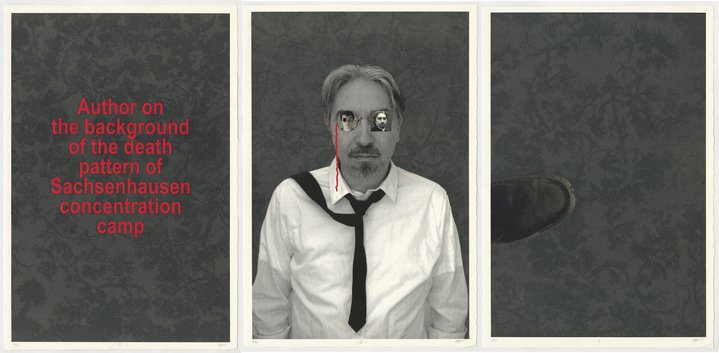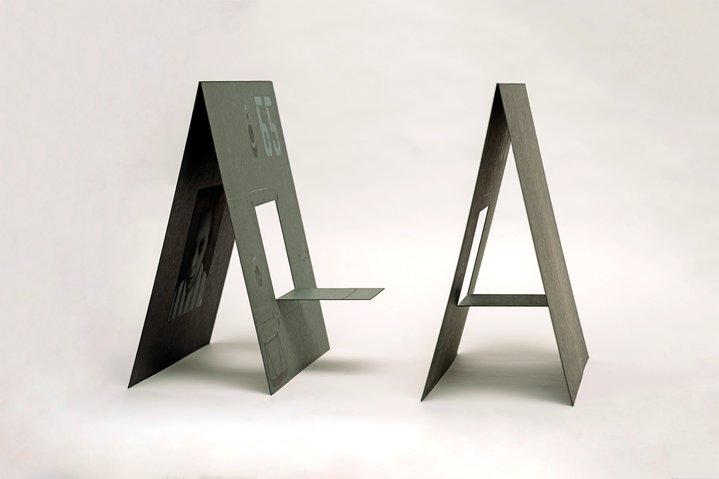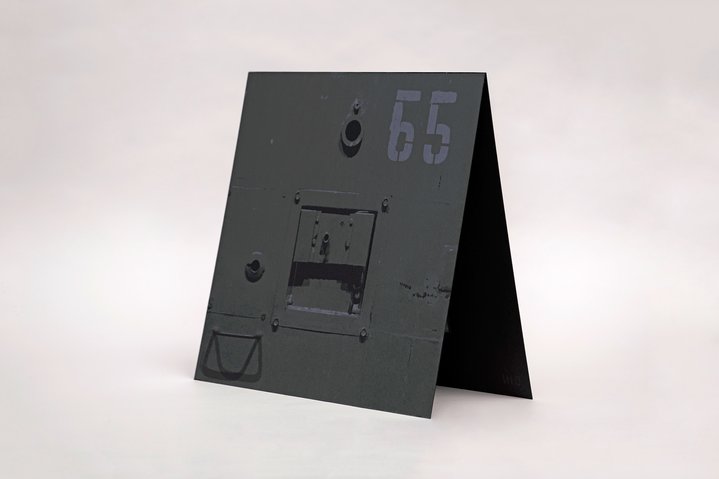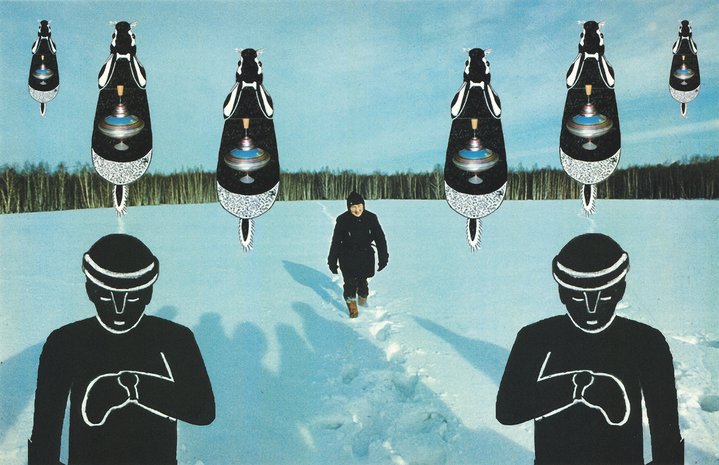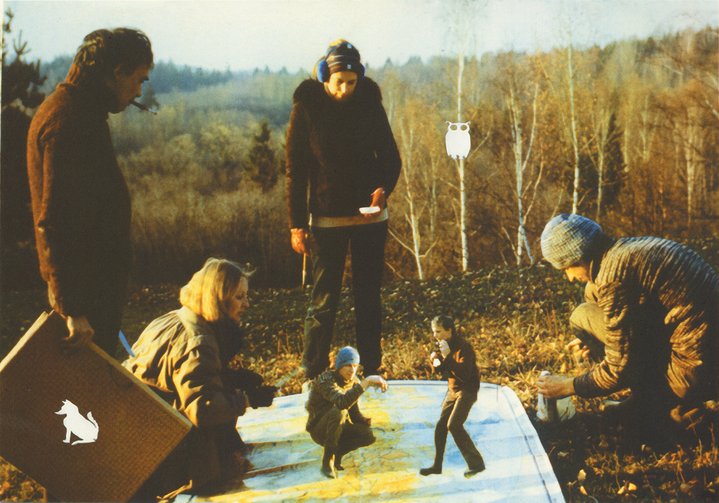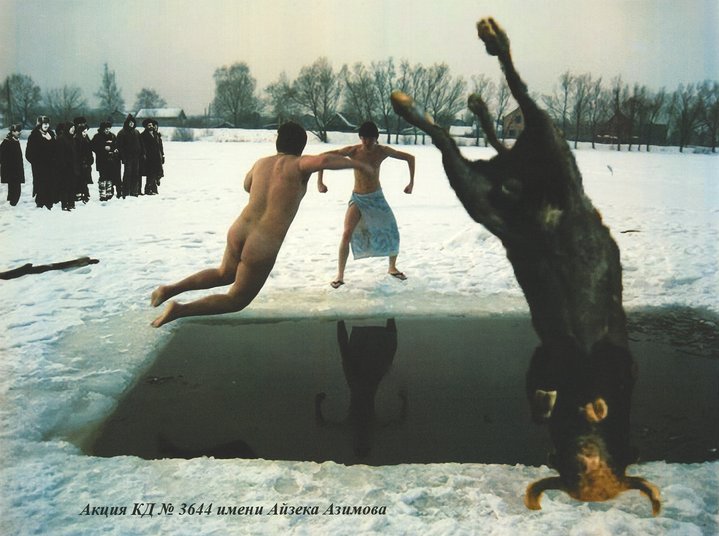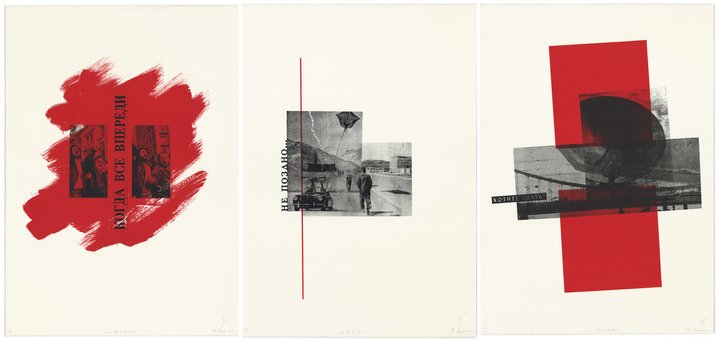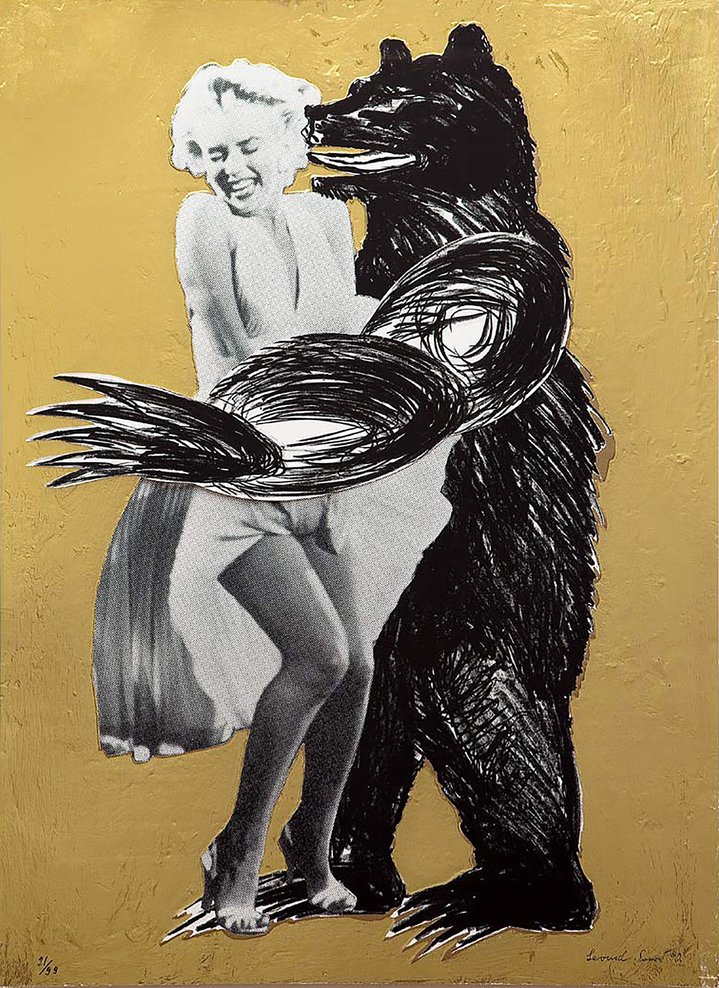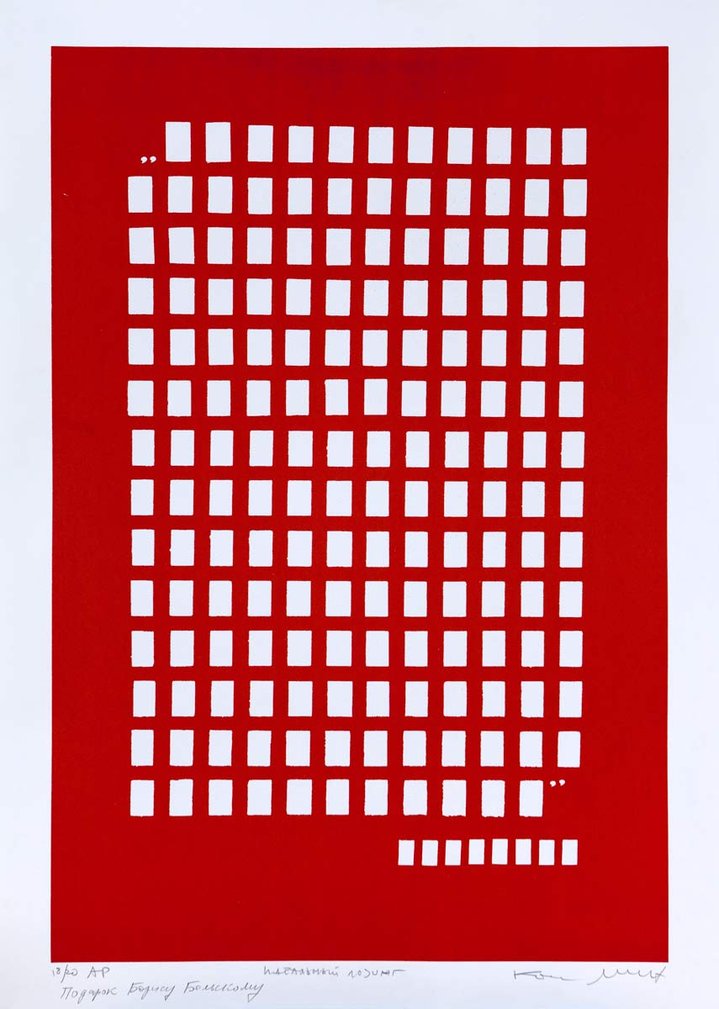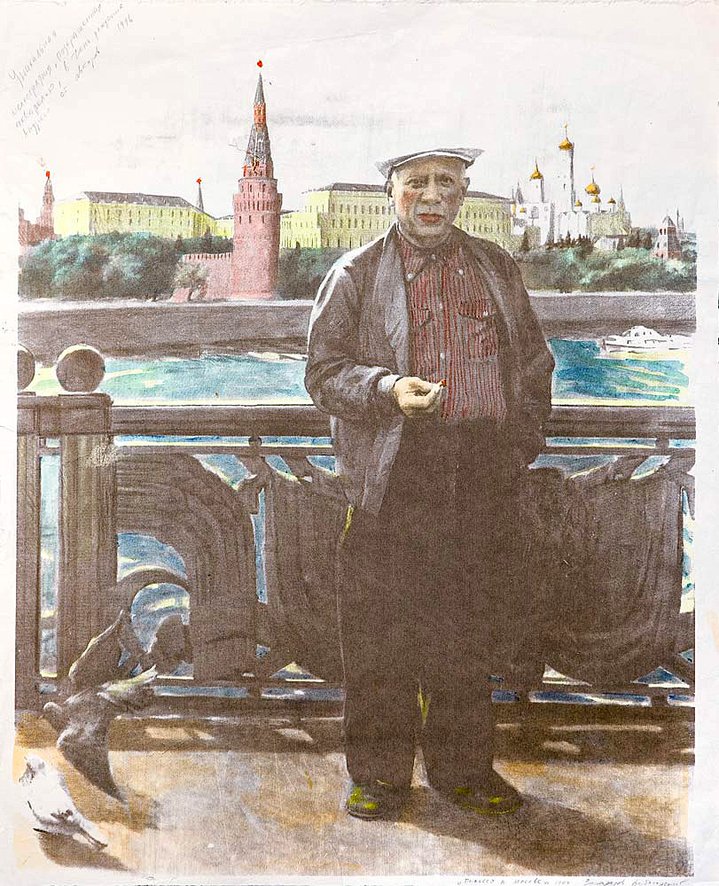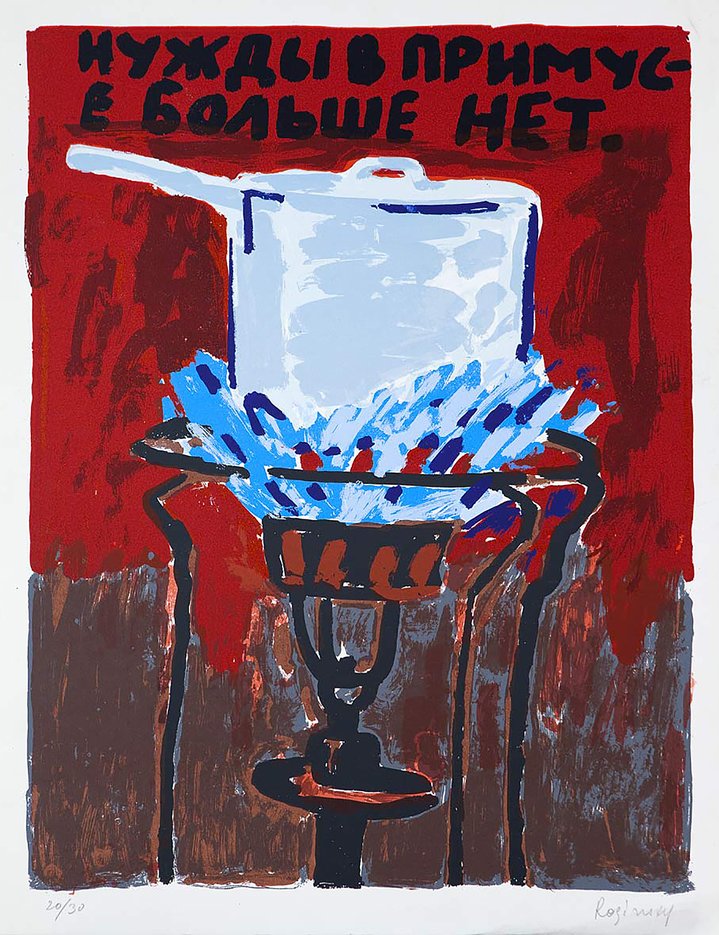Silkscreen prints on Russian contemporary art market

Rostislav Lebedev. Deineka-Liechtenstein. Future pilots, 2008. Silkscreen on Fabriano paper. Courtesy of the JART Gallery
Limited edition silkscreen prints of the works of local artists are still a novelty on the Russian art market. Two Russian art dealers, Jart and Shaltai Editions, are now trying to promote the medium and lure new collectors, many of whom are still skeptical.
Galleries and artists in Moscow are turning to limited edition silkscreen prints to reach a broader, younger audience of collectors and reinvigorate the contemporary art market.
The initiative, which attracted buyers to the Cosmoscow contemporary art fair last September, has been inspired both by the experiments of Soviet underground artists and, of course, by Andy Warhol’s prints.
One of the driving forces behind the idea, Moscow gallery owner and art collector Valeria Rodnyanskaya pointed out, was “while the silkscreens of Andy Warhol’s Factory were conquering the international art market, Soviet artists were building Socialism, living through the Thaw (set in motion by Soviet leader Nikita Krushchev after Stalin’s death in 1953) and starting to build Advanced Socialism.”
“The works of Non-Conformist artists had no access to museums and there were no art markets, no galleries, nor institutions that would support them. They, therefore, had to find a survival strategy,” Rodnyanskaya explained. The solution, offered by artist Andrei Monastyrski (b.1949), founder of the Moscow Archive of New Art (MANI), was a primitive form of underground printing, which flourished between 1981 and 1984. Other artists involved included Eduard Gorokhovsky (1929–2004) and Ilya Kabakov (b. 1933).
The new approach involving silkscreen printing is obviously much more technically advanced, but its foundation stones were laid by the artistic rebels of the 1980s and the link with the past remains very strong. And this time the museums are interested. Monastyrski was, for instance, one of the nine artists who took part in a recent exhibition on that subject at the State Tretyakov Gallery.
The other eight included some of the brightest new artists, as well as prominent but much older classics. In what was designed as a nod to the dissident past, all the participants had to use print technology to create the contents of an “envelope” containing an important personal statement, the point being that the prints of the 1980s were at that time collected in envelopes.
The other eight exhibited in the Tretyakov show were Yuri Albert (b. 1959), Olga Chernysheva (b. 1962), Olya Kroytor (b. 1986), Andrey Kuzkin (b.1979), Taus Makhacheva (b. 1983), Irina Nakhova (b. 1955), Haim Sokol (b. 1973), and Vadim Zakharov (b. 1959). Some of the young artists, such as Olya Kroytor and Andrey Kuzkin, “didn’t know what silkscreen was,” so they created completely original works, said Irina Gorlova, head of the Contemporary Art Department at the State Tretyakov Gallery and one of the curators of the show.
However, attracting buyers to this art form remains tricky in Russia. “People here are still wary of limited edition art,” Rodnyanskaya said. “The word ‘edition’ unfortunately has a negative connotation in Russian. In September, at the last COSMOSCOW fair, an enthusiastic couple ran to our booth when they heard that three works by Vadim Zakharov were on sale. It turned out that they knew this artist and had long been looking for an opportunity to buy his art. They liked the work itself and the price (2,500 EUR), and they began with the purchase. However, when asked which edition number they wanted to buy, they were taken by surprise. The situation then turned 180 degrees.”
Nevertheless, she remains optimistic. “If, five years ago, the demand for printed edition art in Russia was zero - and this is not an exaggeration - today there is a cautious rise in interest.” Rodnyanskaya’s Shaltai Editions sells the NATI II set of 27 sheets covering the works of the nine artists exhibited at the Tretyakov for 22,857 euros, but admits potential buyers still need to be convinced.
Artist Monastyrski, however, thinks the the roots of the problem run deep: “There is little culture here and few cultural interests, and little middle class (if any).”
Alexander Korytov is the director of the Jart Gallery, which has created a Russian Silkscreen Foundation with curator Andrei Erofeev to showcase the works of Soviet artists who first used the technique in the 1980s. According to him, silkscreen works by established Russian artists range from 300 to 500 USD, which is 10 to 20 times less than the price of oil paintings or other works by some of those names. “We consciously lowered the bar so as to provide people with an entry point to collecting, because silkscreen prints also appeal to the younger generations of collectors,” Korytov explained.
Korytov’s sales-pitch stresses the link between the generation of the 1980s and today’s artists and how popular this technique has become among what he calls the superstars of Russian contemporary art. “Not everyone here knows about silkscreen prints. Not everyone knows that this technique was popularized by Andy Warhol.”
The artwork he sells best is called ‘Ballerina’. A silkscreen by contemporary artist Sergei Shekhovtsov, printed in a run of 35 and selling for 400 USD, has particularly attracted foreigners, since it depicts several of Russia’s most notable symbols: ballet, oil and Stalinist architecture. There is also an added benefit: there is no hassle when exporting silkscreen art.
As for other points of sale, Moscow’s once stodgy state museum gift shops are evolving,
although not yet to the extent of selling sell such prints. However, new private institutions are acting bolder. Moscow’s Garage Museum of Contemporary Culture, for instance, sells limited editions in conjunction with shows, such as the one by Japanese artist Takashi Murakami.
“We’re not selling works,” said the Tretyakov’s Gorlova. “Questions of setting prices and collecting money were not really of concern to us in this case. What was important is that this is a new form of works by these artists.”






